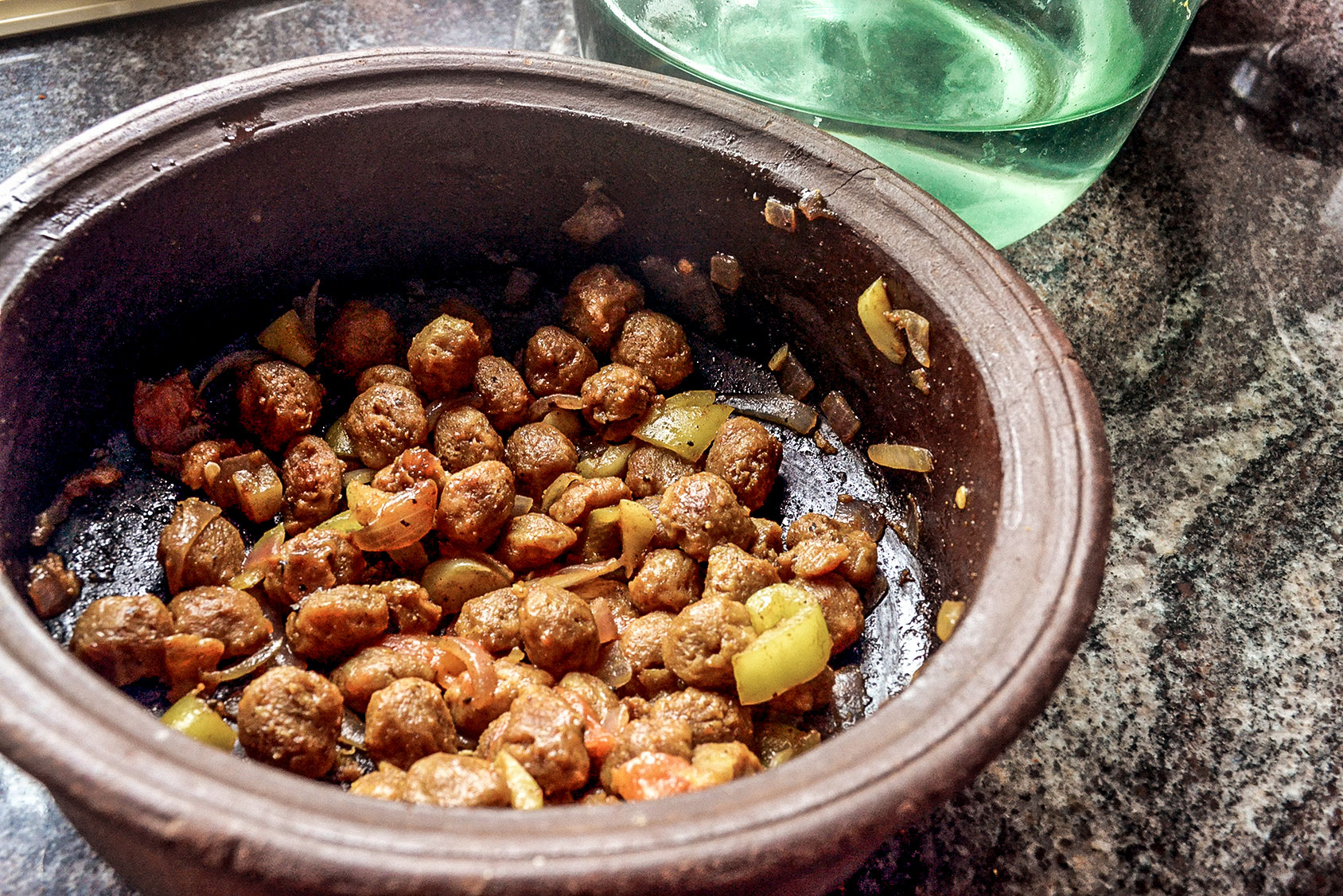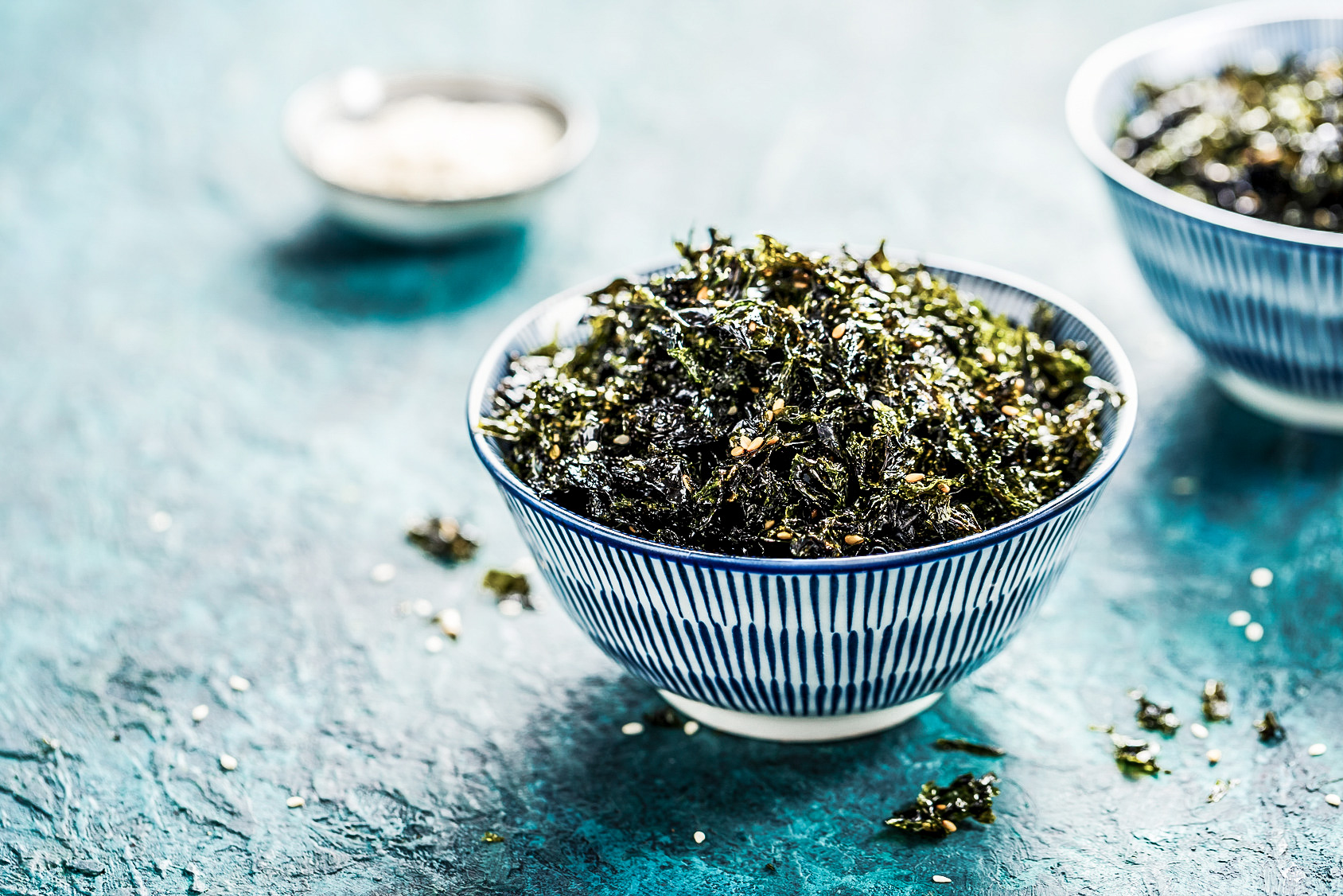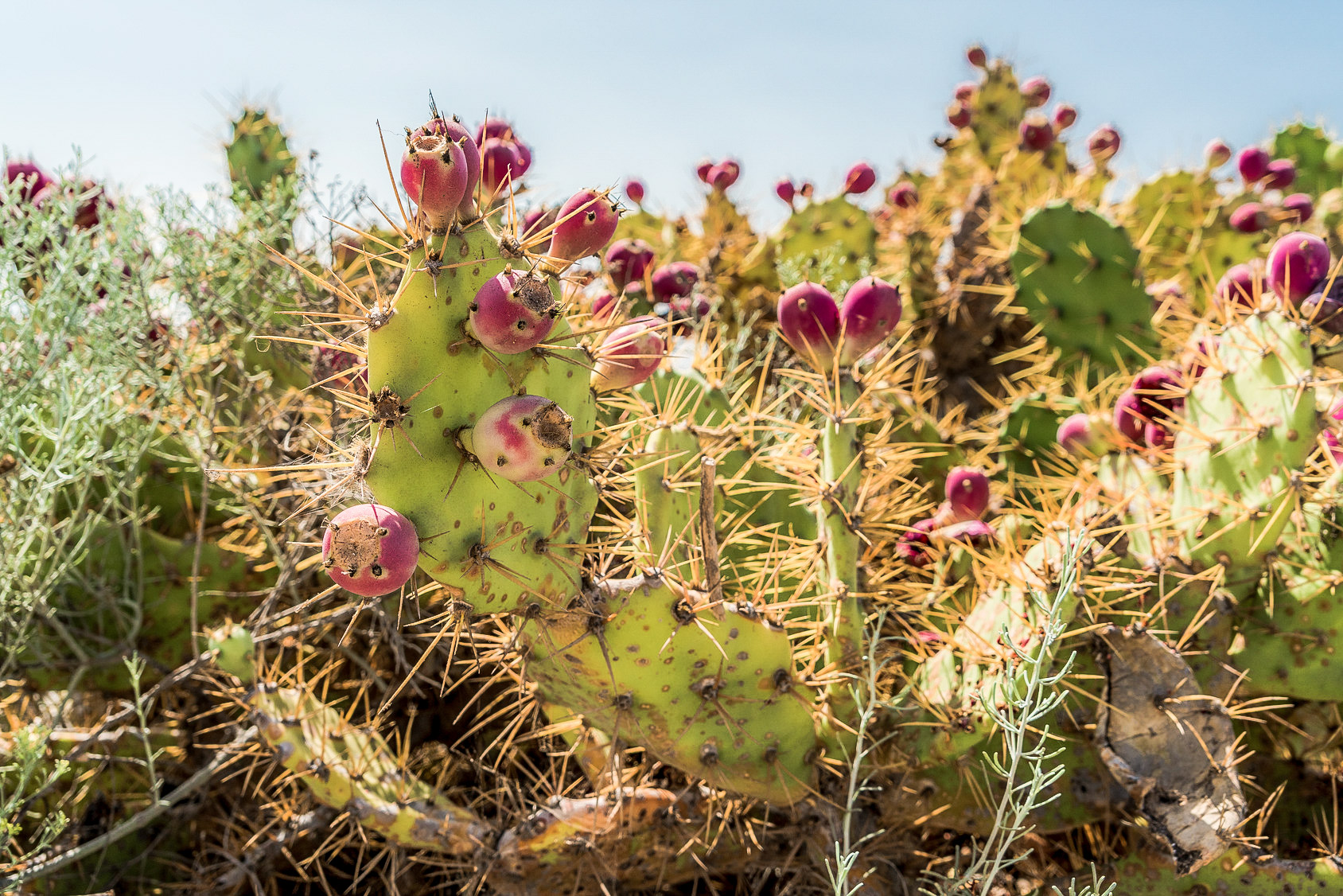Plantsgiving: Nutrition as a litmus test
Picture it: the year is 2050, a new day is dawning. In keeping with the Planetary Diet for around ten billion people, today’s menu calls for around 14 grams of meat, delicately filleted and presented atop a hard roll made of grasshopper flour, alongside some mung bean powder “scrambled eggs”. Sounds weird, but it’s a perfectly realistic scenario, because things are starting to get tight around here – in terms of population density as well as resources. Without concepts for sustainable nutrition, the world’s population and the planet that feeds are inching closer and closer to an emergency.
This is where Knorr, the WWF, and health and nutrition scientist Dr. Adam Drewnowski come in: the Future 50 Foods report they published in March is a plant-based plea for diversity. Sustainable food, they say, means serving balanced alternatives that people and the environment will find equally appetizing. The Future 50 Foods are based on a report by the EAT-Lancet commission, whose large-scale research study calls for a Planetary Meal Plan for sustainable nutrition.
Don’t go bacon my heart: Plant guardians of the environment
“Most of us might believe it’s our
energy or transport choice that cause
the most serious environmental damage.
In fact, it’s our food system
that creates the biggest impact.”
– Dr. Tony Juniper, CBE, Executive Director for Advocacy, WWF-UK –
It’s no secret anymore that the food industry is a major culprit in the rapidly growing environmental risks our planet faces. Deforestation and changes in land usage are aspects of that, as are transport-related emissions and livestock operations. But besides water shortages and groundwater increasingly polluted through overfertilization, the world’s growing population also has to contend with a loss of biodiversity. We’re all familiar with most of the guidelines for sustainable eating: consume less meat, buy regionally and seasonally, and be more conscientious about resources and the environment. Preserving biodiversity is another important one, which is why the Future 50 Foods report was conceived with the goal of preserving it.

Image: Fotolia / Chalice 777
Three-quarters of the calories we consume are derived from just twelve plants and five animals. Around 60 percent of our food is based on three types of grain. This type of consumption gives rise to monocultures and environmental damage – and considering that there are around 20,000 types of edible plants around the world, why limit ourselves? The Future 50 Foods report highlights rarely used and little-known foods, and includes country- and region-based combinations. More sustainable nutrition, according to the Future 50 Foods report, will require us to make three main changes. One: our planet will need to eat more vegetables, and a wider variety of them. Two: we’ll need to rely on more plant-based protein sources rather than meat, poultry, dairy and fish. And three: we’ll need to change it up more when it comes to carbohydrates.
Future 50 Foods: Algae – fit for the future
To help encourage readers to incorporate more variety into their diets, numerous experts contributed ideas for 50 sustainable foods, divided into eleven categories.
- Algae : Kelp, wakame
We mainly know it as the stuff that goes around sushi, but there are countless varieties of algae, and they provide essential fatty acids, secondary nutrients and antioxidants.
- Beans and legumes: Adzuki beans, green beans, fava beans, Bambara groundnuts, black-eyed peas, lentils, marama beans, mung beans, soybeans
Beans and legumes have a nitrogen conversion effect that helps other plants grow, and also offer plenty of protein and fiber.
- Cacti: Prickly pears
Most of us know them as houseplants, or have encountered them occasionally in Mexican dishes, but these drought-resistant vitamin bombs are full of fiber, amino acids, and antioxidants.
- Grains: Amaranth, buckwheat, finger millet, fonio, khorasan wheat, quinoa, spelt, teff, wild rice
The whole world’s focused on rice and wheat, but these varieties offer satisfying alternatives.
- Fruit vegetables: Squash blossoms, okra, orange tomatoes
Technically fruit from a botanical standpoint, these fruit vegetables are perfect additions to any meal plan.
- Leafy greens: Beet greens, wild broccoli, kale, moringa, pak choi, pumpkin leaves, red cabbage, spinach, watercress
These varieties add plenty of fiber, vitamins and minerals to your diet.
- Mushrooms: Velvet-footed pax, hen-of-the-wood, saffron milk cap
These mushrooms have a consistency that will win over even the most die-hard meat lover.
- Nuts and seeds: Linseed, hemp seeds, sesame seeds, walnuts
This category is a real winner in terms of good fats.
- Root vegetables: Black salsify, parsley root, daikon radish
As robust and nutrient-rich as they are, it’s a shame they get such little appreciation.
- Sprouts: Alfalfa sprouts, sprouted kidney beans, sprouted garbanzo beans
Sprouts have double or triple the nutrient levels of unsprouted beans and grains.
- Tubers: Lotus roots, purple yams, yam beans, red Indonesian, sweet potatoes
It’s hard to top potatoes in terms of popularity, but these tubers make healthy and delicious alternatives.

Image: Fotolia / valya82
These Future 50 Foods offer great prospects in terms of inspiring consumers to incorporate more variety into their diets and practice sustainable nutrition. Even so, a few of the recommendations give cause for concern as well. One example: quinoa, currently among the trendiest of the pseudograins, has a dark side. This South American staple is grown almost exclusively in Peru, Bolivia and Ecuador; From a climatic standpoint, the long transport distances quinoa requires are hardly unproblematic. And for farmers in the region, the hype around quinoa has had mostly negative consequences. Other foods, such as Indonesian sweet potatoes and fonio, have similar issues in terms of long transport distances.
Overall, the Future 50 Foods report by Knorr and WWF includes quite a few “old friends” – red cabbage and green beans aren’t exactly new in this part of the world. Still, encouraging people to eat meatless and diversify their diets in the name of sustainable nutrition is an important step, and the report includes recipes and ideas to help readers get started. That’s equally important, because without a few tasty ideas for environmentally friendly protein sources and sustainable foods, we’ll be in real trouble by 2050 – and not just in terms of space.
The complete report and additional information on the Future 50 Foods are available in PDF form on the WWF website and through Knorr.
















